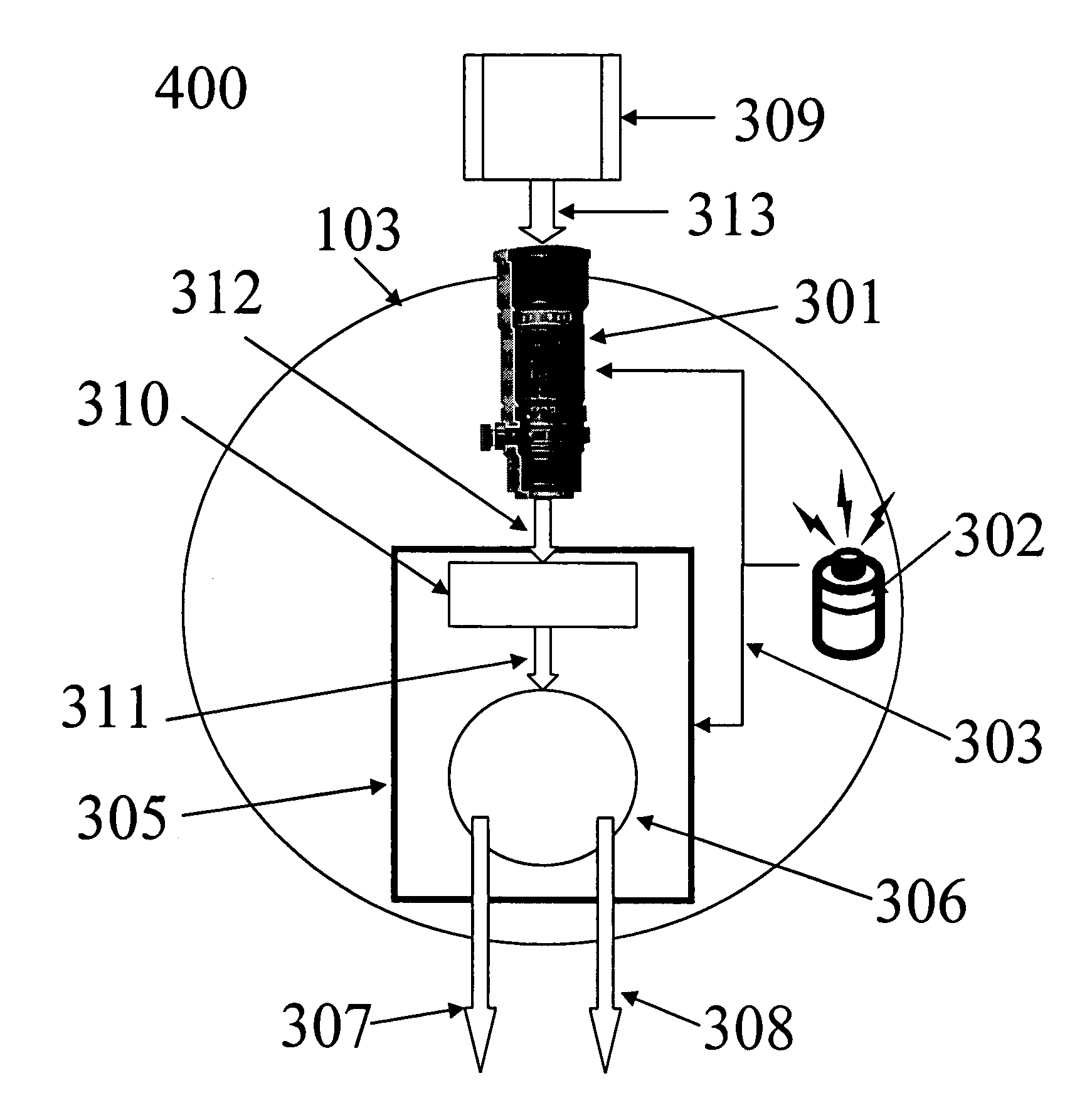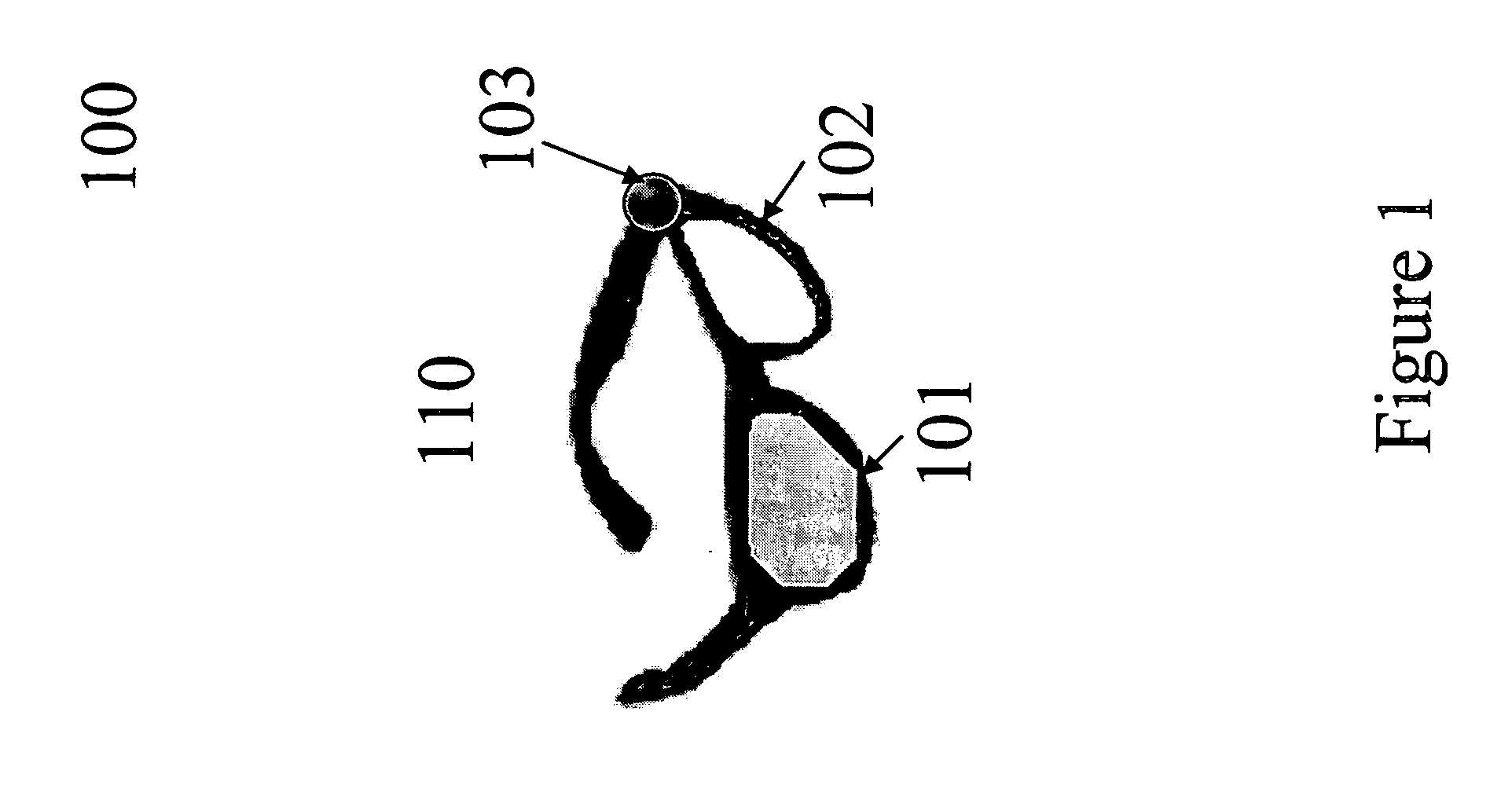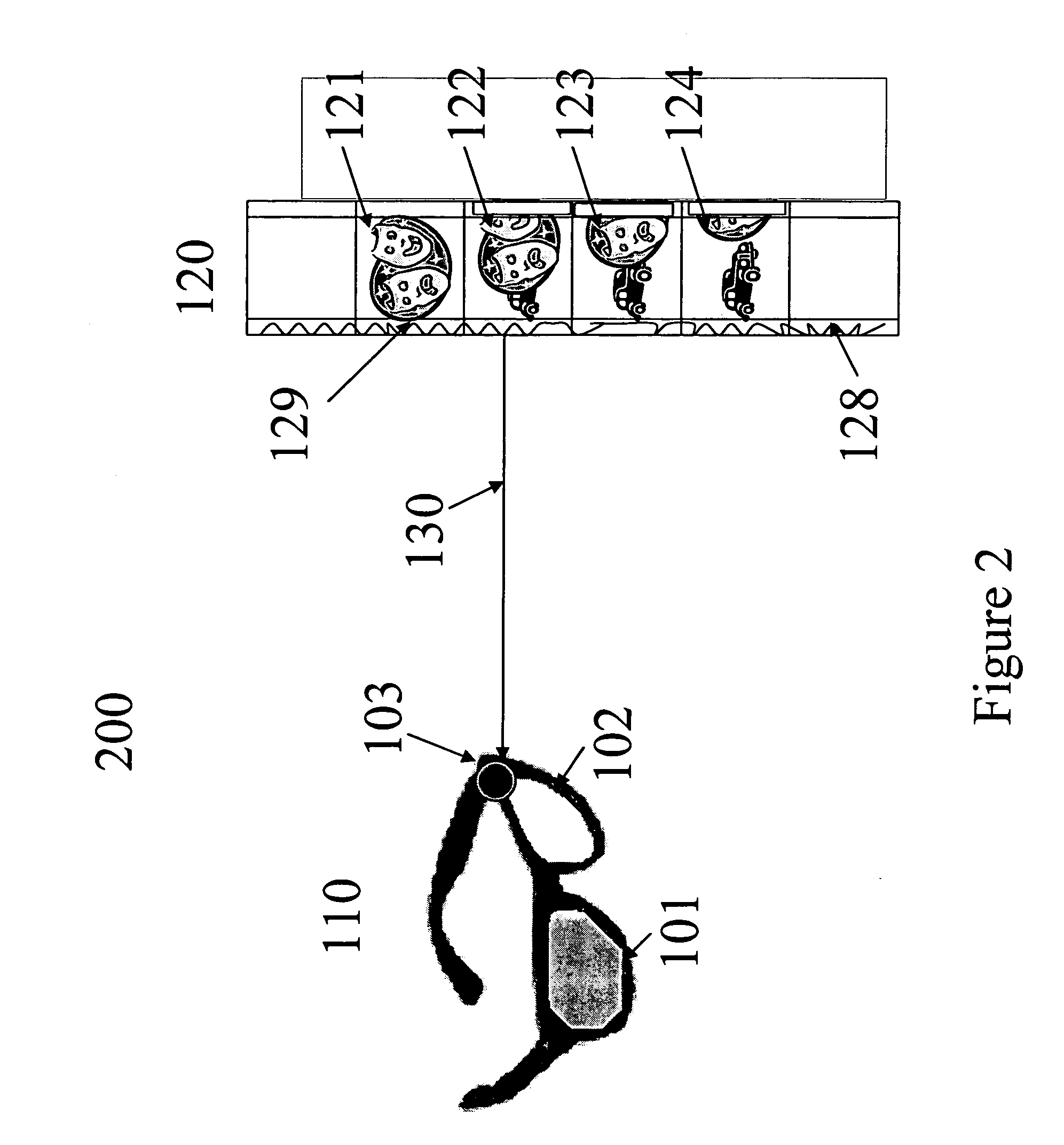System and method for a 3-D phenomenoscope
a phenomenoscope and system technology, applied in the field of motion pictures, can solve the problems of improper synchronization, eye strain and discomfort, and the 3d movie fad of the early to mid-1950s however soon faded, and achieve the effect of greatly reducing eye strain and discomfor
- Summary
- Abstract
- Description
- Claims
- Application Information
AI Technical Summary
Benefits of technology
Problems solved by technology
Method used
Image
Examples
embodiment
Preferred Embodiment
[0123]FIG. 1
[0124]FIG. 1 is a block diagram 100 illustrating a preferred embodiment of the 3-D Phenomenoscope invention for connection-free Pulfrich glasses
[0125] For exemplary purposes, FIG. 1 shows the 3-D Phenomenoscope in one of the three states that the lenses can take. FIG. 1 shows the right lens 101 darkened and the left lens 102 as clear. This is the configuration to view a motion picture with a 3-dimensional effect in which the lateral motion is moving from left-to-right on the viewing screen
[0126] In the preferred embodiment, the viewing glasses 110 consist of a right lens 101, a left lens 102, and a Glass Lens Controller Unit (GLCU) 103. The GLCU 103 includes a digital sensor to take pictures or snapshots of the displayed motion picture, a processor to process the recorded images in successive frames and identify synchronization events, and can send signals to independently control the darkness of the right and left lenses based on the detected synch...
PUM
 Login to View More
Login to View More Abstract
Description
Claims
Application Information
 Login to View More
Login to View More - R&D
- Intellectual Property
- Life Sciences
- Materials
- Tech Scout
- Unparalleled Data Quality
- Higher Quality Content
- 60% Fewer Hallucinations
Browse by: Latest US Patents, China's latest patents, Technical Efficacy Thesaurus, Application Domain, Technology Topic, Popular Technical Reports.
© 2025 PatSnap. All rights reserved.Legal|Privacy policy|Modern Slavery Act Transparency Statement|Sitemap|About US| Contact US: help@patsnap.com



